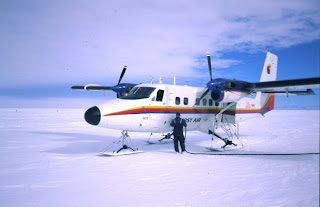A Reader recently noticed the unlikely coincidence of my home town, (Bellingham, Washington) being sister city to Punta Arenas, Chile. So how, I wonder, did Bellingham ever become a sister city to Punta Arenas, he queried. I contacted the local sister city representative for Punta Arenas, a very nice woman named Teresa. She said she did not know the answer but would inquire at a meeting that evening. The next day she sent me an email stating that the connection had been established by a Bellingham company named Trillium during a period in which they had some business dealings in Punta Arenas. This made sense enough to me, but I wanted to know more about the circumstances so I set about researching old newspaper articles and news releases on the interweb (I like to say Interweb instead of Internet because my teenage sons hate it. It makes their skin crawl.).
Examine the photo at the top of this page. You are looking at a stand of Lenga, a strain of beech tree found only at the southern tip of Chile. Lenga is categorized as a "rare" wood. Less dense than most hardwoods, it is easy to work with and finishes with a warm reddish brown color. It is among the preferred woods for high end mouldings, making it quite valuable commercially. Trillium could not believe their good fortune when, in 1993, they were able to purchase 680,000 acres of rare old growth Lenga forest at the southern tip of Chile.
Over the years Trillium had become a remarkably successful organization, developing resorts, commercial districts, neighborhoods and a popular shopping mall. They were excellent at what they did and, as if to make the point of how bright their future was, in 1995, they bought controlling interest in a sun glasses company (Gargoyles). But the true roots of Trillium were set in logging, an industry where they had already awaken the ire of environmentalist. Indeed, in the process of banking their early millions, Trillium had come under fire for logging practices which showed little regard for the ecology left behind. This would haunt them a world away.
I recall a lunch meeting I had in 1996 with a VP of Trillium. He described to me the perfectly aligned rows of Lenga. They would be so easy to harvest, so profitable on the open market. By his estimation they had practically stolen the asset, and a tiny bit of spittle danced on his lower lip as he imagined aloud the inartistic harvesting to come. "There is some opposition by environmentalists," he added, waving a hand as if to shoo an insect.
In short order some 200 environmental groups from Chile, Argentina, and the United States rallied to oppose the project. Still, Trillium pressed on. In 1998 they purchased a saw mill in Punta Arenas, Chile with a portion of the 30 million dollars borrowed from Portland, Oregon based Capital Consultants. The mill needed substantial improvements to accommodate the harvest of the Lenga. It would be a much larger mill with many more jobs for the local populace, a fact which Trillium hoped might ameliorate the otherwise hostile sentiment toward them. During this time Trillium established the sister city connection between Bellingham and Punta Arenas. This was a rare foray into public relations for Trillium, one which cost and accomplished nothing. Siblings will quarrel. Trillium's effort to log the old growth Lenga forest was confounded by lawsuits and permitting delays for the next two years. Over this time they were demonized in the popular press as representing all that greed, hubris, and arrogance might manifest in a company. Think of Goldman Sachs today.
Then, in 2000, the Securities Exchange Commission sued Capital Consultants. Alleging the firm to be nothing more than a Ponzi scheme, the SEC accused Capital Consultants of losing some 350 million dollars belonging to its clients and concealing the loss. The CEO pleaded guilty to fraud charges, had a stroke, and has since been living in a Portland nursing home. A court-appointed receiver took over management of the remaining assets in 2002. The loan to Trillium, now well in arrears and backed by the collateral of the Lenga forest, was auctioned off to a Wall Street bank for about 33 cents on the dollar. The call for collateral was immediately enforced and Trillium surrendered their interest in the forest in exchange for the outstanding loan.
The new owner of the forest examined it's value, considered the costs of extracting that value and, as wiser organizations tend to do, harvested the tuition paid by those who had gone before it. In a move that surprised all parties concerned, that Wall Street bank announced in 2004 that it would donate all 680,000 acres of old growth Lenga forest to a conservation group. In a press release dated December 12, 2004 they stated given the unspoiled nature of the tract of land, the firm determined that this was a unique opportunity to permit the ecologically important key features of the land to be conserved for the future, reflecting the views of the firm's senior management.
That firm was Goldman Sachs.










